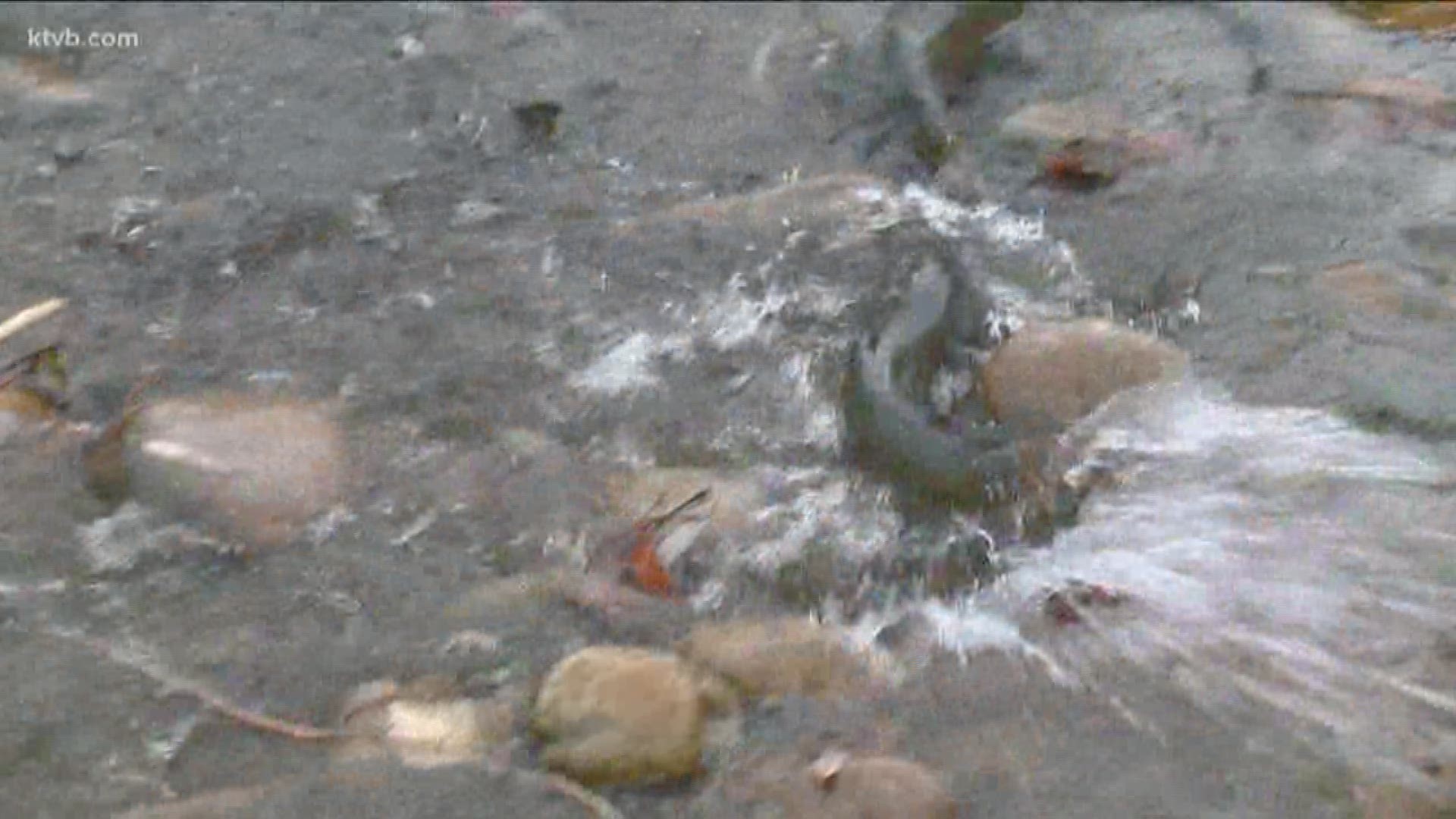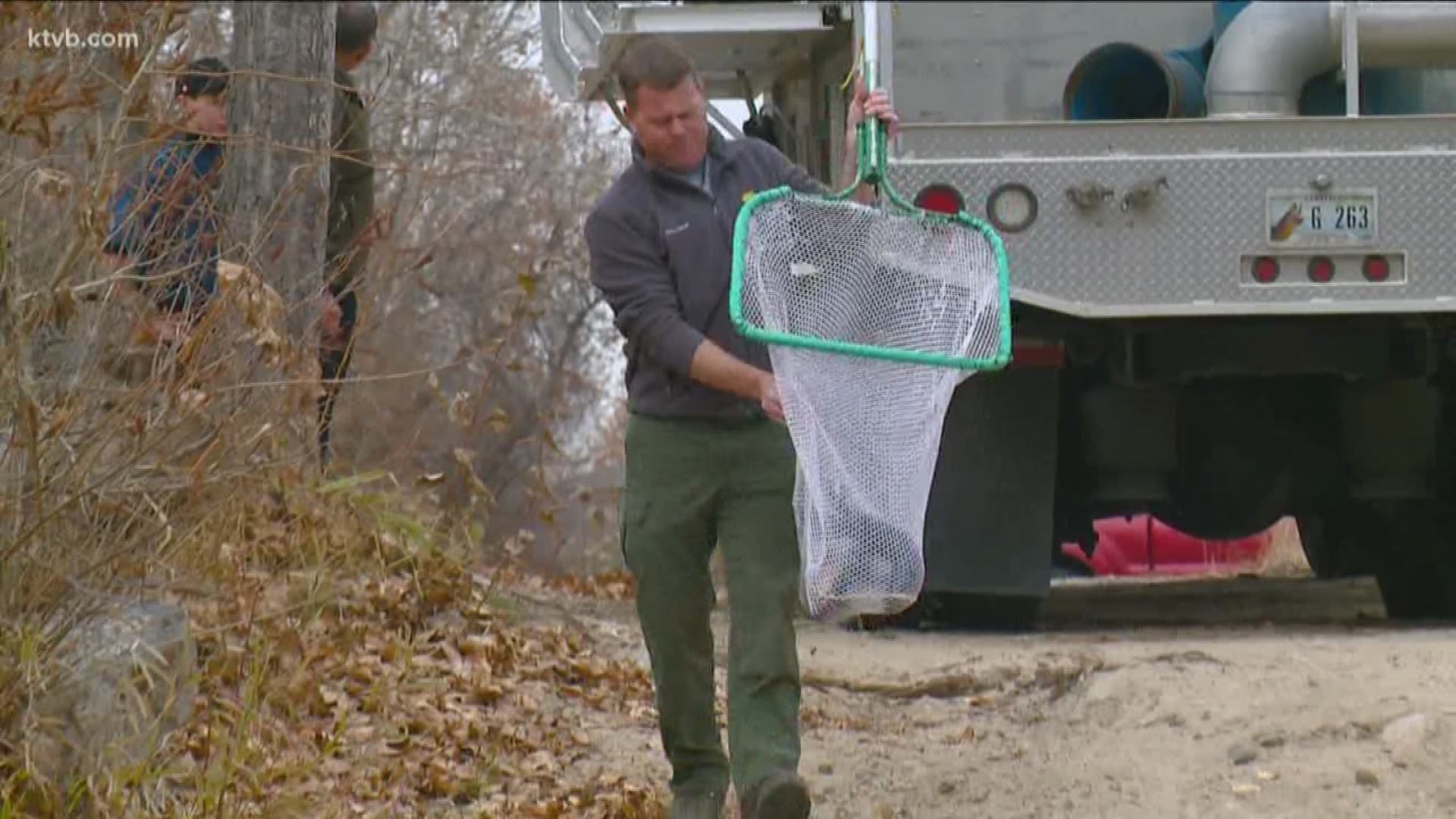BOISE, Idaho — For spin casters and fly fishers alike, the week leading up to Thanksgiving on the Boise River is normally one of excitement as lines crisscross the water.
Hopeful casters throw shiny lures and flick streamers into the water in hopes of hooking into an iconic fish that’s traveled all the way from the Pacific Ocean: the steelhead.
But this fall, anglers didn’t crowd the banks for a shot at a close-to-home trophy. For the first time in 20 years, Idaho Fish and Game did not release captured steelhead into the Boise River, according to the Idaho Press.
“It was something you could set your watch by,” said Lewis Hunt, a guide and employee at Idaho Angler in Boise.
Steelhead are large, ocean-going rainbow trout native to Idaho and the northwest region, according to Idaho Fish and Game. Each year, IDFG collects steelhead near the Hells Canyon Dam using a trap system that siphons fish out of the Snake River from fish ladders, which help fish climb over the otherwise-impassable dams.
LAST YEAR: Steelhead released into the Boise River
Six hundred of those captured fish become broodstock — a group of fish used for breeding purposes — in the department’s hatcheries, where they help strengthen the numbers of released steelhead each year, according to John Cassinelli, Idaho Fish and Game regional fisheries manager for the Southwest region.
In every other year over the past two decades, the agency trapped more fish than the 600 required for broodstock. Any additional fish, Cassinelli said, go to the states of Idaho and Oregon and to tribes, particularly the Nez Perce, and “can be used however those states see fit.”
One way IDFG uses its excess fish is by moving them to the Boise River. This year’s traps, however, only captured the 600 fish necessary to replenish Idaho hatcheries, so Fish and Game had no extra fish to release into the Boise River.


Wild anadromous fish (spawn in freshwater, live in saltwater) like steelhead and salmon swam the Boise River before a series of dams were erected in the 1960s and ‘70s, so it made sense for IDFG to drop the fish in the river each fall, Cassinelli said.
The fish that are usually tossed into the Boise River are “A-run” steelhead, which spend only one year in the ocean before making their way back to Idaho. They’re much larger than the freshwater-only rainbow trout that usually are stocked in the Boise River, according to Cassinelli, and can top out at somewhere around 2.5-feet long and 10 pounds.
The low numbers this year of fish collected in the trap system and subsequent decision not to bring steelhead to the Boise are part of a larger pattern of low fish returns, Cassinelli said, as the numbers of steelhead and salmon returning to Idaho from the Pacific Ocean have plummeted in recent decades.
“There’s a plethora of things that go into salmon and steelhead returns, and you see a lot of cycles,” he said. “You see years of low returns and periods of times with good returns depending on ocean conditions, migration conditions, and all of those things play a role in the strength of the run.”
RIPPLE EFFECTS
The overall dearth of steelhead has been felt not just by anglers fishing in the Boise River. Hunt, with the fly fishing shop Idaho Angler, said the impacts of fewer returning steelhead hit harder up toward Riggins and small northern Idaho towns that rely on fishing tourism.
In fall 2018 and 2019, the Idaho Fish and Game Commission closed steelhead fishing on the Clearwater River because of a short supply.
“There was an influx (of guides) on the Salmon (River) because of the closure on the Clearwater,” Hunt said. “It affects those towns because there’s a bunch of business lost.”
At Idaho Angler, the change in steelhead fishing has hurt business in more ways than one.
IDFG’s annual steelhead drop is a good time for selling steelhead flies and fishing licenses, Idaho Angler employee Dale Pennecard said. This year, shops missed out on anglers coming in and picking up those items. In recent years, people have been buying fewer steelhead-specific rods, reels, fly-tying materials and other big-ticket items.
“The steelhead guys aren’t seeking that,” Hunt said.
Pennecard believes keeping the fishery healthy is more important than just putting fish into the Boise.
“We’d like to have them this year and give us a little more traffic, but I think our mindset is that we’d rather save the fish and miss it a year or two than lose the fish,” Pennecard said.
“It’s an additional angling opportunity in a place where there historically was one,” he said, and one that’s a popular fishery with anglers from around the Treasure Valley.
Hunt agreed.
“For fisherman who can’t make the trip north and who can’t afford to spend $100 on gas to get to Riggins, it was the only real good opportunity to catch and harvest one,” he said about steelhead released into the Boise River.
Pennecard remembers IDFG dropping steelhead in the Boise three times in a year when the runs were plentiful.
“That was a long time ago,” he said.
More from our partner Idaho Press: Boise passes moratorium for non-commercial kennel licenses


